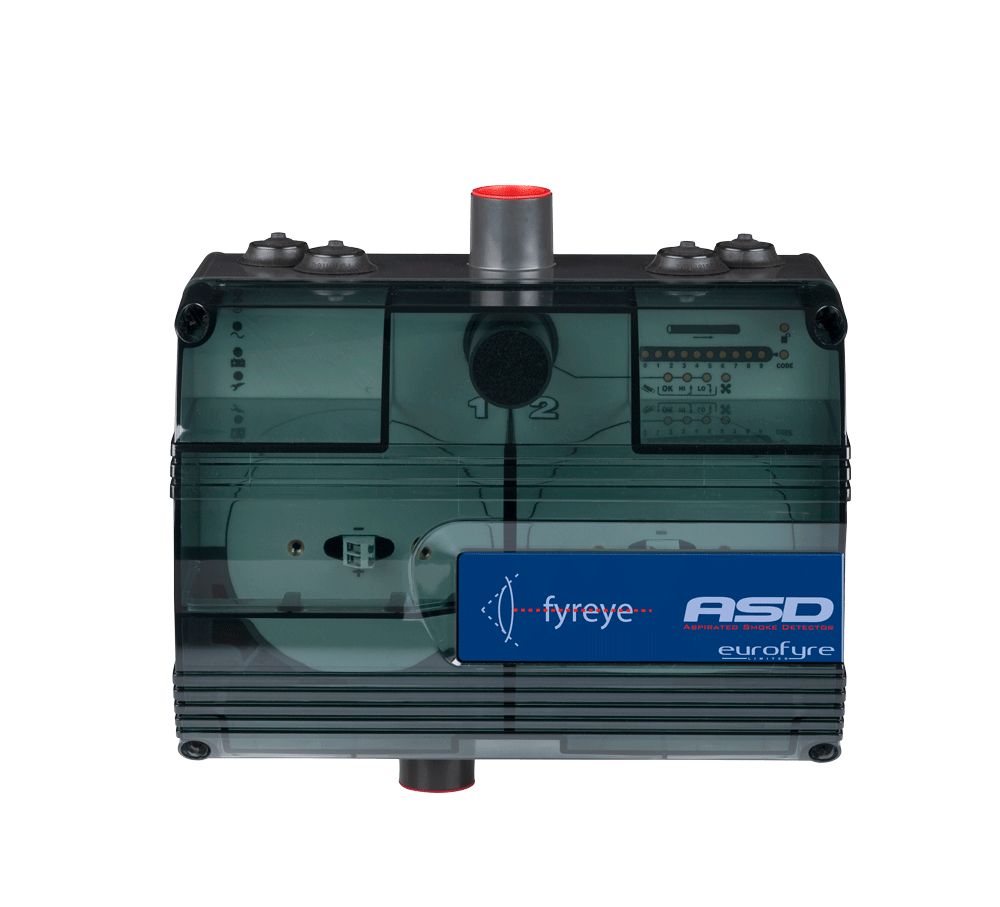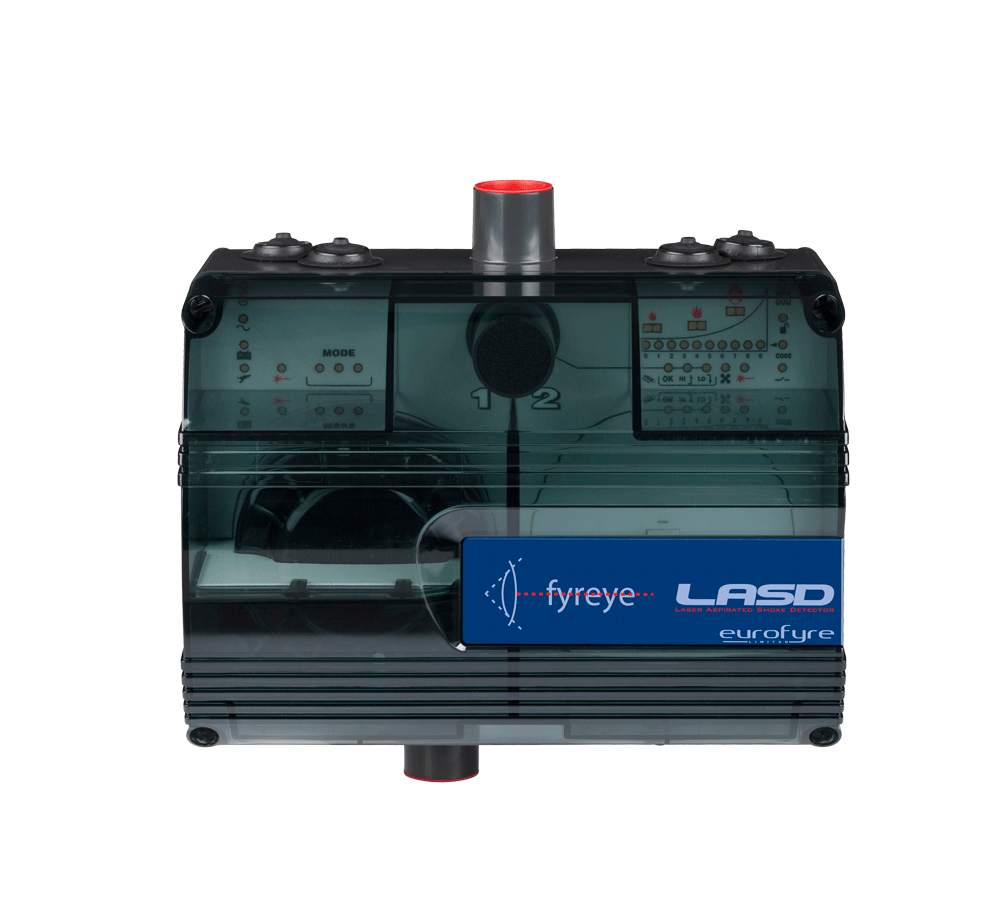The ASD transforms traditional ‘point’ detectors into powerful aspirating systems for use in normal, harsh, dusty, wet or inaccessible spaces. The ASD can house a variety of manufacturer’s conventional or analogue addressable point (spot) detectors and is available in either a single or dual pipe configuration.
If larger area coverage is required, the LASD can be specified, which is equipped with one or two laser point (spot) detectors. Compared with a traditional smoke detector, the LASD detector is classed as ‘high sensitivity’ and is therefore capable of providing far greater area coverage.
 |
 |
|
| Model | ASD | LASD |
| Description | The ASD (aspirating smoke detector) is often referred as a ‘point in a box’ aspirating smoke detection system. It can be fitted with analogue addressable or conventional detectors. | The LASD, short for ‘laser aspirating smoke detector’ is designed for the protection of risks requiring class A, B or C design sensitivity. It uses a specially designed laser point detector within a aspirated enclosure. |
|
The ASD system actively draws air from the protected area through a single 8mm sampling hole in a pipe run up to 50m per pipe. Sampled air is then filtered before being analysed by conventional or analogue addressable point detectors incorporated in the fire system. The system utilises a high performance aspirator and software configurable flow monitoring circuitry. The airflow level is displayed on a ten element bar graph that can be adjusted for high and low flow thresholds, and flow failure is reported as a device fault via relays to the loop or annunciator. |
The LASD system actively draws air from the protected area through sampling holes in a pipe network of up to 100m per pipe. Sampled air is then filtered before being analysed by medium sensitivity laser spot (point) detector(s) incorporated in the system. Alarm thresholds (Alert, Action or Fire) are reported by activating functional LEDs in the display and also on board voltage-free relays. The systems utilise a high performance aspirator and software configurable flow monitoring circuitry. Air flow is displayed on a ten element bar graph that can be adjusted for high and low flow thresholds, and flow failure is reported as a device fault via dedicated fault relays. |
|
| Sampling Pipe Length (Max) | 50 Metres | 100 Metres |
| Sampling Holes (Max) | 1 or 2 | |
| Detectors | 1 or 2 Conventional or Analogue Addressable Point Detectors (not supplied) | 1 or 2, 0.06%/m Laser Point Detectors (fitted) |
| Fan speed and flow sensitivity can be individually programmed using the 2 programming buttons on the right-hand side of the ASD. |
The sensitivity thresholds for each of the three alarm levels, fan speed and flow sensitivity can be individually programmed using the 2 programming buttons on the right-hand side of the LASD. There is also a USB interface below the unit which provides a connection to a PC for system configuration. |
|
| Dimension (W x H x D) | 259 x 184 x 166mm | |
| Typical Applications |
|
|
| Part Code |
EF-ASD1 EF-ASD2 |
EF-LASD1 EF-LASD2 |